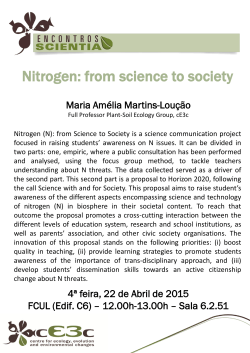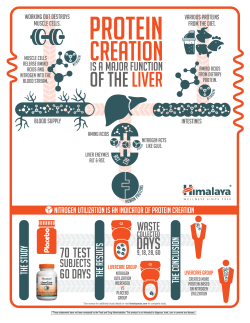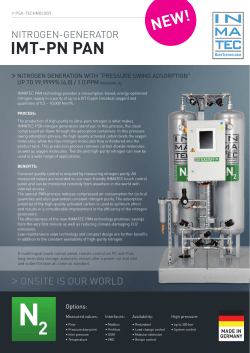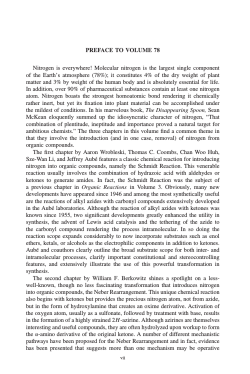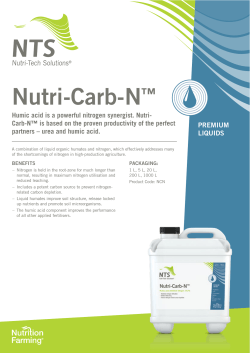
NATIONAL BRAIN RESEARCH CENTRE(NBRC) NH-8, Manesar-122050, HARYANA
NATIONAL BRAIN RESEARCH CENTRE(NBRC) NH-8, Manesar-122050, HARYANA Sample Questions For Integrated Ph.D. Entrance Examination-2012 Note : Sample questions are provided to give a general idea of the style of the questions that appear in the entrance test. These questions do not reflect the difficulty level of questions in the entrance test. PHYSICS 1. The infrared spectrum falls between: (1) Radio waves and micro waves (3) Visible and ultraviolet regions 2. The colour of a star indicates its: (1) Weight (3) Distance 3. (2) Increase in wave length (4) None of these The terminal velocity of a spherical ball of radius r falling through a viscous liquid is proportional to: (1) r (3) r3 5. (2) Size (4) Temperature One star is going away from the Earth. Then the observer on the Earth will experience: (1) Decrease in wave length (3) No change in wave length 4. (2) Micro waves and visible region (4) Ultraviolet and x-rays (2) r2 (4) 1/r A 200 W lamp is connected to 100 volts supply. The number of electrons passing through the lamp in one minute is(charge of an electron =1.6 X 10-19C): (1) 1x1019 (3) 7.5x1020 (2) 2x1015 (4) 1x1012 CHEMISTRY 6. Which of the following type of metals are the most efficient catalysts? (1) Alkali metal (3) Transition metals 7. The strongest bronsted base is: (1) Clo4– – (3) Clo 8. (2) Clo3– – (4) Clo2 Mohr’s salt is prepared in warm distilled water by the reaction of (NH4)2SO4 and: (1) FeSO4 (3) CaSO4 9. (2) Alkaline Earth metal (4) Metals of p-block (2) Fe2(SO4)3 (4) ZnSO4 Which among the following is correct order of reactivity with water according to electro chemical series: (1) Cu>Zn>Mg>K (3) Mg>Zn>Cu>K (2) K>Mg>Zn>Cu (4) K>Zn>Mg>Cu [1] 10. The first order rate constant for the decompostion of N 2 O5 is 6.2 10 period for the decomposition in seconds is: (1) 1117.7 (3) 223.4 –4 sec.–1 . The half life (2) 111.7 (4) 1609 BIOLOGY 11. Which is not a root: (1) Potato (3) Sweet Potato (2) Carrot (4) Raddish 12. Stilt roots are found in: (1) Rice (3) Groundnut (2) Sugarcane (4) Gram 13. RIBOSOMES are made up of: (1) RNA and DNA (3) RNA and Protein (2) DNA and Protein (4) DNA alone 14. Nitrogen is available for plants in the form of: (1) Nitrogen gas (3) Nitrate (2) Nitrogen dioxide (4) Nitric acid 15. Karyokinesis means division of: (1) Cytoplasm into two (3) Protoplasm into two (2) Nucleus into two (4) None of these 16. The greatest source of variations is brought about by: (1) Mutation (3) Meiosis (2) Chromosomal aberrations (4) Poly ploidy 17. Cell wall of bacteria is made up of: (1) Cellulose (3) Peptidoglycon (2) Pectin (4) Chitin 18. Which of the following is not found in Rhizopus: (1) Sporangia (3) Columella (2) Rhizoids (4) Setae 19. When a pollen tube enters embryo sac by piercing through integument, it is called: (1) Mesogamy (3) Chalazogamy (2) Porogamy (4) Pseudogamy 20. The process in which virus are involved in sexual reproduction of bacteria called: (1) Transduction (3) Transformation (2) Transcription (4) Translation [2] MATHEMATICS 21. Log tan 1O + log tan 2O + .......... + log tan 89O = .............: (1) 1 (3) (2) 0 4 22. If xy+yz+zx=1 then (1) (4) None of these 1 –xyxy = ............: 1 xyz (3) xyz 4 xyz (2) (4) None of these 23. The maximum value of sin 2 + cos4 is: (1) 0 (3) 3 4 (2) 1 2 (4) 24. In a triangle ABC, the angle A is greater than angle B. If the values of the angles satisfy the equation 3 sin x – 4 sin 3x–K=0, 0 <K<1 then the measure of angle C is: (1) (3) 2 2 3 3 5 6 (2) (4) [3]
© Copyright 2025

